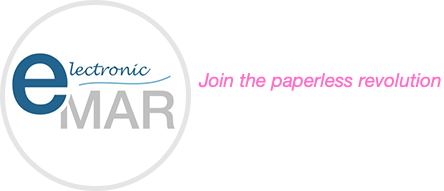
Medication administration is one of the key responsibilities of a care worker. Medication documentation when done accurately helps in effectively treating the patients/care home residents. MAR (Medical Administration Record) sheets/charts are designed for this specific purpose – to effectively administer medication.
Want to know more about MAR sheets? Read on…
1) How to use MAR sheet?
MAR sheets are available in a printable format; they can be printed and used in a care home. Some pharmacies may provide MAR sheets; one can also prepare a handwritten MAR sheet.
2) When is MAR sheet used?
MAR sheet is often confused with drug charts. However, they are not the same. MAR sheet is to be used only after the medication has been prescribed and labeled by a doctor, a pharmacy, or a non-medical prescriber.
3) What does MAR sheet include?
A standard MAR sheet includes the patient/care home resident’s name, health complications, date of birth, and address. When documenting the MAR sheet, care workers must make sure:
• What are the medications that are prescribed to the resident
• The date and time for giving the medication
• What is the dosage instructed in the prescription
• In what form should the medication be given
4) The format of MAR sheet
The format of MAR sheet can vary from care home to care home. However, some of the basics (the points mentioned above)must be included.
5) What happens when the medication is altered?
A new MAR sheet is to be used when the resident’s medication is altered. It’s important not to modify the current MAR sheet. Instead, the old MAR sheet must be submitted for record keeping.
6) What happens when the medication is discontinued?
If a medication is discontinued, then a diagonal line is to be drawn through the dosage instruction section.
7) DOs of MAR sheet
• The codes used in the MAR sheet must be clearly explained.
• The MAR sheet must be signed immediately after administration.
• All the personal details must be completed in every MAR sheet.
8) DON’Ts of MAR sheet
The don’ts of MAR sheet include:
• Sign for medicines that were administered by other caregivers.
• Care workers must not use a pencil to sign the MAR sheets.
• Correction fluids should be avoided.
9) Pros of MAR sheet
• Standardises medication administration.
• Easily available.
10) Cons of MAR sheet
• Several medication errors.
• Stressful to work with.
• The current MAR sheet must be copied from the scratch when medication is altered.
Use Electronic MAR ( eMAR) to manage MAR. Some of the benefits of eMAR include:
1) Saves support worker’s time.
2) Reduces medication errors.
3) Ensures that doses are not missed.
4) Records the carer’s notes.
5) Integrates with the pharmacy.







My brother recommended I might like this web site. He was totally right. This post actually made my day. You cann’t imagine simply how much time I had spent for this info! Thanks!| а